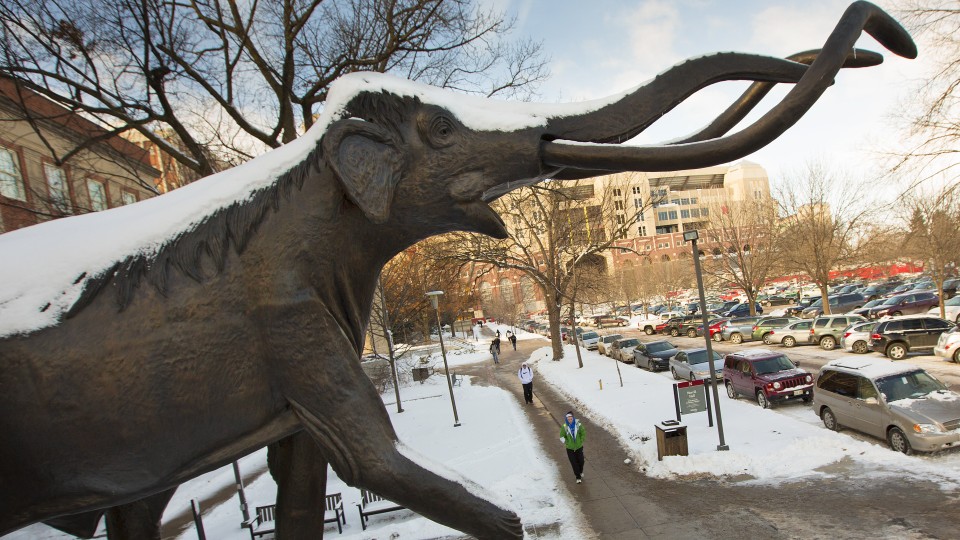
Jen Landis
Dec 12-22
Jen Landis has been painting since childhood. Her latest paintings combine the juxtaposition of clean, solid shapes and bright blocks of color with the free-form process of messy lines. This technique allows the works to come through in an organic, non-calculated way. Jen’s work is currently on display at NIC in the Link, 2nd Floor. The exhibition is free and open to the public. Street parking is metered. Pay by phone. https://jenlandisart.com/
Museum Builders: A Story of Fossils and Friendship & an Escape Room Experience
Temporary Exhibition at Morrill Hall
Through April 30, 2019
9:30 a.m.-4:30 p.m.
Morrill Hall
14th and Vine Sts.
This temporary exhibition explores the history of paleontology and the friendship that led to the construction of the University of Nebraska State Museum, Morrill Hall. Accompanying Museum Builders is an escape room which features the history of fossil collecting in Nebraska. The display connects past to future and includes a preview of the new exhibitions featured in the redevelopment of the fourth floor. http://museum.unl.edu/museumbuilders/
Sheldon Museum of Art
Through December 31
12th and R Sts.
Approaching Landscapes
Featuring more than ninety works from the museum’s permanent collection as well as several loans, Approaching Landscape considers how artists depict natural, built, and imaginary environments as ways to explore the complex relationships humans have with the places they choose to inhabit.
For Freedoms: in the future days
The enduring relevance of Franklin Delano Roosevelt’s 1941 “Four Freedoms” address is explored in an exhibition of artworks drawn from Sheldon’s permanent holdings and those of private collections.
https://sheldonartmuseum.org/
International Quilt Study
1523 N 33rd St.
From Kente to Kuba
The stitched textiles in this exhibit represent an important niche in the rich, ever-evolving world of African textiles. Although stitched textile techniques such as patchwork, appliqué, and quilting are less common in Africa than weaving, dyeing, and printing, the stitching arts are greatly prized among some ethnic and regional groups. Kente cloth from Ghana is made by sewing long, woven strips together to create large fabrics for garments. Kuba cloth from the Democratic Republic of the Congo is a ceremonial raffia fabric constructed using a number of techniques, including patchwork and appliqué.
http://www.quiltstudy.org/